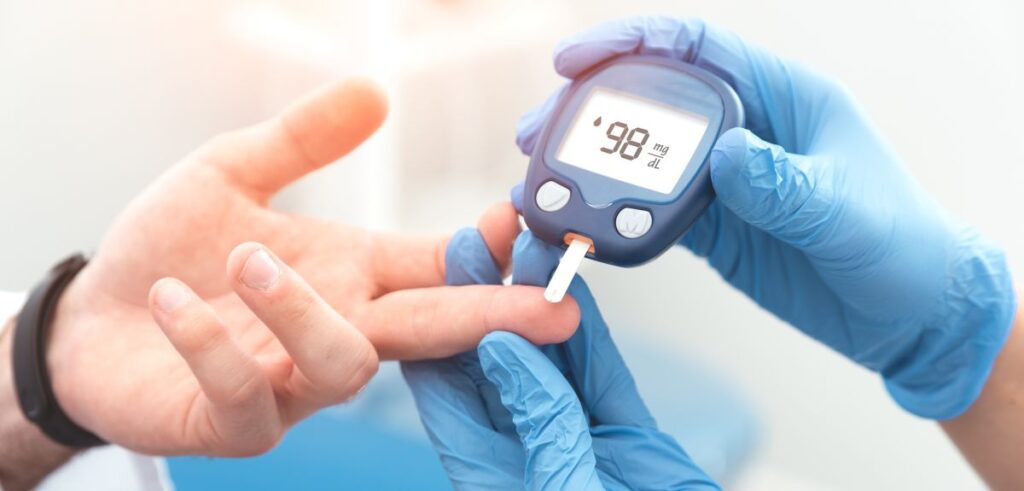
Diabetes is a chronic medical condition that affects millions of people worldwide. It occurs when the body either doesn’t produce enough insulin or cannot use insulin effectively, resulting in elevated blood sugar levels. Understanding diabetes, its types, symptoms, and how to manage it is crucial for maintaining a healthy life and preventing complications.
1. What is Diabetes?
Diabetes is a metabolic disorder characterized by high blood glucose (sugar) levels over a prolonged period. Insulin, a hormone produced by the pancreas, helps regulate blood sugar by allowing glucose to enter cells, where it is used for energy. In diabetes, either the body doesn’t produce enough insulin or the cells don’t respond properly to insulin, leading to hyperglycemia (high blood sugar levels).
a. The Role of Insulin
Insulin plays a vital role in balancing blood sugar. When you eat, your body breaks down carbohydrates into glucose. Insulin helps transport glucose from the bloodstream into the cells, lowering blood sugar levels.
b. Effects of High Blood Sugar
Persistently high blood sugar levels can lead to various health complications, including:
- Heart disease
- Nerve damage (neuropathy)
- Kidney damage (nephropathy)
- Eye damage (retinopathy)
- Foot problems (due to poor circulation and nerve damage)
2. Types of Diabetes
There are several types of diabetes, each with its causes, risk factors, and treatments. The most common types include:
a. Type 1 Diabetes
- What it is: Type 1 diabetes is an autoimmune condition in which the body attacks the insulin-producing cells in the pancreas, leaving it unable to produce insulin.
- Cause: The exact cause is unknown, but genetics and environmental factors, such as viral infections, may play a role.
- Symptoms: Symptoms tend to appear suddenly and include excessive thirst, frequent urination, fatigue, weight loss, and blurred vision.
- Management: People with type 1 diabetes must take insulin injections or use an insulin pump to manage blood sugar levels. Along with insulin therapy, they must monitor their blood sugar levels regularly, eat a balanced diet, and exercise.
b. Type 2 Diabetes
- What it is: Type 2 diabetes is the most common form, in which the body becomes insulin-resistant (the body’s cells do not respond to insulin as well as they should), and the pancreas may not produce enough insulin.
- Cause: It is linked to genetic factors, lifestyle choices, and obesity. It is more common in adults but is becoming increasingly prevalent in children and teenagers due to rising obesity rates.
- Symptoms: Symptoms develop gradually and include frequent urination, increased thirst, fatigue, slow healing of wounds, and recurrent infections.
- Management: Type 2 diabetes is often managed through lifestyle changes like diet and exercise. In some cases, oral medications or insulin therapy are required.
c. Gestational Diabetes
- What it is: Gestational diabetes occurs during pregnancy and usually resolves after childbirth. However, it increases the risk of developing type 2 diabetes later in life.
- Cause: Hormonal changes during pregnancy can interfere with insulin’s ability to regulate blood sugar.
- Symptoms: Most women with gestational diabetes have no noticeable symptoms, but high blood sugar levels can be detected through routine prenatal screening.
- Management: Gestational diabetes is managed with a healthy diet, regular physical activity, and sometimes insulin or medication.
d. Prediabetes
- What it is: Prediabetes is a condition in which blood sugar levels are higher than normal but not high enough to be classified as type 2 diabetes. It is a warning sign that diabetes may develop in the future.
- Management: Lifestyle changes such as weight loss, a healthy diet, and regular exercise can reverse prediabetes and prevent the onset of type 2 diabetes.
3. Symptoms of Diabetes
While each type of diabetes may present differently, some common symptoms include:
- Excessive thirst and dry mouth
- Frequent urination
- Unexplained weight loss (more common in type 1)
- Fatigue and weakness
- Blurred vision
- Slow healing of cuts or wounds
- Tingling or numbness in hands and feet (neuropathy)
- Increased hunger
In some cases, diabetes may be asymptomatic, especially in early stages of type 2 diabetes, making regular health check-ups essential.
4. Managing Diabetes
Effective diabetes management is key to preventing complications and maintaining quality of life. Here are the primary aspects of managing diabetes:
a. Monitoring Blood Sugar
- Regular blood glucose monitoring is essential to track how well your body is managing blood sugar levels. Depending on the type of diabetes and your treatment plan, this may involve testing your blood sugar multiple times a day using a blood glucose meter or a continuous glucose monitor (CGM).
- For individuals with type 1 diabetes or those taking insulin, more frequent monitoring is necessary.
b. Diet and Nutrition
Diet plays a crucial role in diabetes management. The focus is on controlling blood sugar levels and maintaining a healthy weight.
- Carbohydrate counting: Since carbohydrates have the most direct impact on blood sugar levels, many people with diabetes benefit from tracking their carbohydrate intake.
- Balanced meals: Meals should include a balance of carbohydrates, lean proteins, and healthy fats.
- Choose whole grains, fiber-rich vegetables, and fruits to help regulate blood sugar.
- Limit processed foods, sugary snacks, and beverages that can cause blood sugar spikes.
- Meal planning: Eating meals and snacks at regular intervals helps avoid large fluctuations in blood sugar.
c. Exercise
Regular physical activity can help manage diabetes by improving insulin sensitivity, lowering blood sugar levels, and promoting overall health.
- Aim for at least 150 minutes of moderate aerobic exercise (like walking or swimming) per week, along with strength training exercises.
- Consult your healthcare provider before starting a new exercise routine, especially if you take insulin or other medications that lower blood sugar.
d. Medications
Depending on the type of diabetes and individual needs, medications may be necessary to manage blood sugar levels.
- Type 1 diabetes: Requires daily insulin injections or the use of an insulin pump.
- Type 2 diabetes: Can be managed with oral medications (such as metformin), non-insulin injectables, or insulin. Some newer medications help the body use insulin more effectively or reduce sugar absorption.
- Regular check-ups: It’s important to work with a healthcare provider to adjust medications as needed based on blood sugar control.
e. Stress Management
Stress can affect blood sugar levels, making it harder to manage diabetes. Techniques such as meditation, yoga, deep breathing, or mindfulness can help reduce stress and improve blood sugar control.
5. Preventing Complications
Uncontrolled diabetes can lead to serious long-term complications, including:
- Cardiovascular disease: Diabetes significantly increases the risk of heart disease, stroke, and high blood pressure.
- Neuropathy: Nerve damage caused by high blood sugar can lead to pain, tingling, and numbness, especially in the hands and feet.
- Kidney disease: Diabetes is a leading cause of kidney damage, also known as diabetic nephropathy.
- Eye damage: Diabetes can damage the blood vessels in the eyes, leading to retinopathy, vision problems, or blindness.
- Foot complications: Poor circulation and nerve damage can lead to foot problems, infections, and, in severe cases, amputation.
a. Routine Screenings
- Regular medical check-ups, eye exams, and foot checks are essential for early detection and prevention of complications.
- HbA1c test: This blood test measures your average blood sugar level over the past two to three months and is an important tool for tracking diabetes control.
6. Living Well with Diabetes
Managing diabetes requires lifelong attention, but with the right tools and support, people with diabetes can lead healthy, fulfilling lives. Here are some tips for thriving with diabetes:
- Education: Stay informed about diabetes by regularly consulting healthcare professionals and attending diabetes education programs.
- Support system: Having a network of supportive family, friends, or diabetes support groups can make managing diabetes less overwhelming.
- Technology: Tools like continuous glucose monitors (CGMs), insulin pumps, and mobile apps can help streamline diabetes management and make it easier to stay on track.
Conclusion
Understanding your diabetes—whether it’s type 1, type 2, gestational, or prediabetes—empowers you to take control of your health. By focusing on blood sugar monitoring, a healthy diet, regular exercise, and proper medication, you can effectively manage the condition, minimize complications, and lead a healthy, balanced life.
